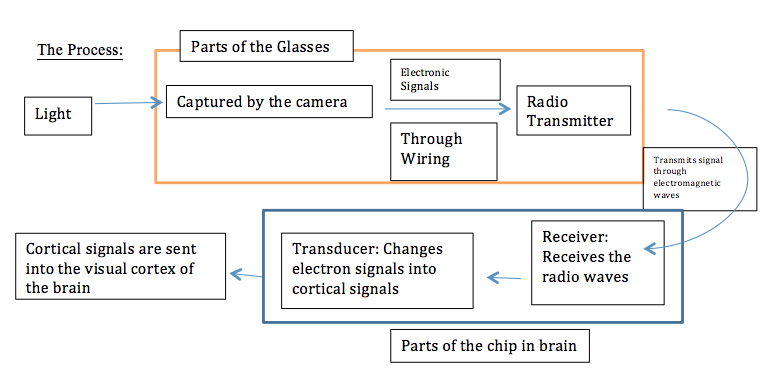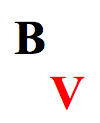Our technology’s objective is to enable sight for blind people. This technology connects
the brain to a modern external device that replicates the work of a normal human eye. This
device has the ability to transfer data into cortical signals that could be decoded by the visual
cortex of the brain, thus enabling sight to the patient.
The human eye functions in the same way as a camera. The process through which light enters the cameras lens and is stored in the film mimics the way the human eye processes light to the brain. The technology presented in this project is a modeled using this principle and concept.

This technology contains two major parts: an external device (glasses) and a minuscule
chip that is connected to the visual cortex of the brain. The glasses include simple structures:
cameras, wiring system, and a radio transmitter. The cameras function to take 29.97 frames
per second (The normal FPS for the naked eye) and record it into a given film. The recorded
information is sent via wiring system to the radio transmitter. This transmitter sends the
information (via radio waves) to the chip implanted in the brain (this principle is found in the
modern-day use of antennae television). The chip is nano-sized in order to prevent any damage
to other sections of the brain. This nano-electronic device has the ability to change radio-
transmitted information into cortical signals. The device is aimed at interfacing a micro-electrode
array to an external computer for neural control applications. This nano-electronic chip is
constructed using silicon and is further encased into a silicate glass before implanted in the brain.
The chip in the brain contains two separate converters. The first one converts the radio signals
from the receiver in to electrical signals. Then the second converter, changes the electrical
signals into cortical signals that can be decoded by the brain (the modern use of this concept is
found in the Brain-Gate Technology).
BrainGate in Action












